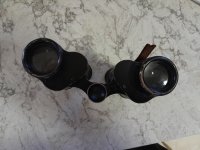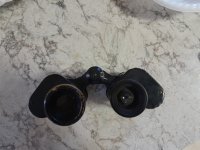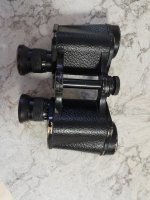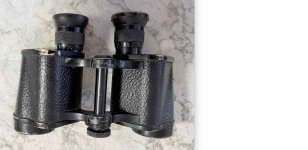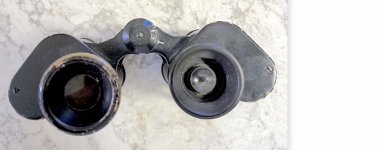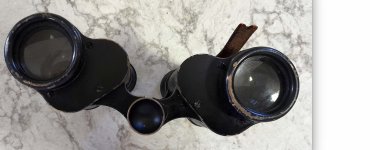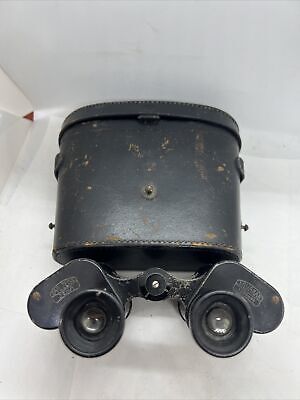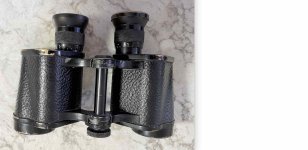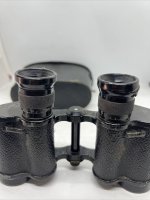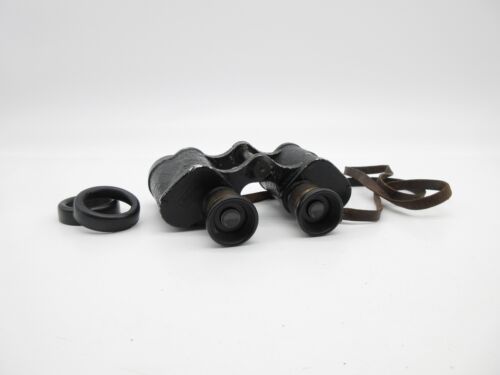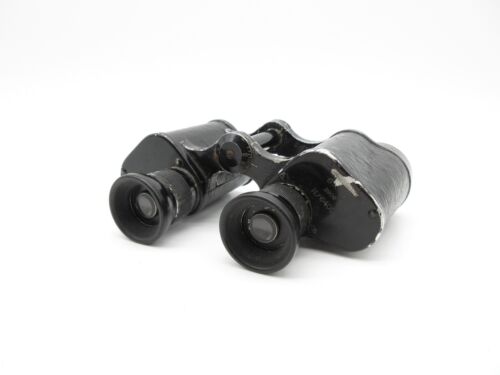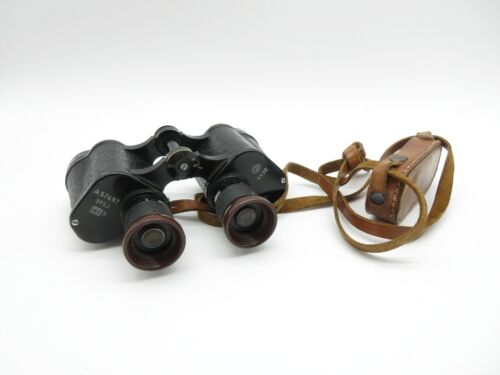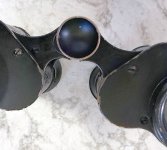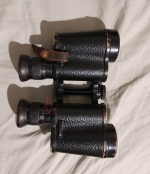If this binocular has a similar internal structure to later bino's , I suspect that means the grease has given up the more flexible components of the grease leaving the helical focus unable to move. How ever the upper portion of the eyepiece casing is attached to the inner portion that comprises the section that houses the eyepiece elements must have come loose in the process of attempting to focus that side. Under the eyecup of a typical classical porro binocular are 3 small screws that lock the eyepiece collar to the inner section that comprises the optics of the eyepiece. It would appear that your particular bino might be of similar construction. I'd be very careful at this stage without further information as eyepiece cups are sometimes made of a plastic like material that turns brittle with age. It appears to have the eyecup that does seperate, but it's speculation on my part that the eyecup should unscrew and the method of the connection between the eyepiece collar and the inner section of the eyepiece might be revealed. There appears to be a line around the base of the eyecup that denotes the section of the cup that is a seperate element that may unscrew. A drop of a mild solvent or thin oil might works it's way along the separation, down onto the thread , poetentially allowing for an easier disassembly than trying to aplly greater force to break the 2 elements free. Applying some heat from a hair dryer or even a good soak in the noon day sun can soften some of the hardened grease allowing a better chance at making the separation. The trick will require holding the knurled diamond hatch focuser section stationary while attempting to turn the upper section eyecup to unscrew - try turning clockwise to see if it can be made to move as that is the most common way that the pieces are threaded together. Don't overpower the attempt as the eyecup may fracture under the load.
If you get that far , let me know.... I sure wish that someone with first hand knowledge of this binocular would respond as the actions you take can literally make or break the binocular!





